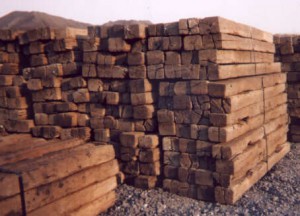The Coalition for Sustainable Rail (CSR) has announced a new initiative to review the feasibility of “upcycling” used railroad ties into advanced biofuels. The research project is funded by a grant from the Indiana Rail Road (INRD). Working with the Natural Resources Research Institute (NRRI) of the University of Minnesota – Duluth, CSR aims to determine the viability of converting some of the 15 million ties replaced by U.S. railroads each year into a clean-burning coal alternative.
 “CSR is thrilled to have the support of the Indiana Rail Road on this important, potentially historic opportunity,” said CSR President, Davidson Ward. “INRD is dedicated to innovation and technology, and its investment in our primary research is an inspiration to the entire team.”
“CSR is thrilled to have the support of the Indiana Rail Road on this important, potentially historic opportunity,” said CSR President, Davidson Ward. “INRD is dedicated to innovation and technology, and its investment in our primary research is an inspiration to the entire team.”
Using a biomass processing technique known as torrefaction, the researchers at NRRI and CSR will convert the structure of used railroad ties, primarily made from hardwood species, into a clean, renewable, homogeneous, and densifiable biofuel. The final result is anticipated to be a pelletized biofuel that can be used in power plants. However, the biofuel will first powe CSR’s test bed steam locomotive, the Santa Fe Railway’s 1937-built No. 3463.
“As the son of a Santa Fe dispatcher and a lifelong student of that railway, I’m intrigued in CSR’s desire to rebuild and modernize such an innovative piece of technology as the 3463, and especially NRRI and CSR’s pursuit of energy, fuel and transportation development,” said INRD President and Chief Executive Officer, Thomas G. Hoback. “This important research impacts not only the future of energy in the U.S., but it honors the tradition of American innovation, from the reconstruction and modernization of an iconic steam locomotive to the biofuel development associated with our donation.”
This initial investigation aims to identify any hurdles involved with the conversion of railroad ties to fuel, including the handling of wood preservatives found in railroad ties. CSR will make results of the research known through its “White Paper Program“.
Hoback concluded, “This is something that I believe could lead to a key development in the future of the railroad industry. It is important to take pride in the history of where we’ve been, and the unique melding of research with preserving history, as championed by CSR, is a great way to honor the legacy of the Santa Fe.”

